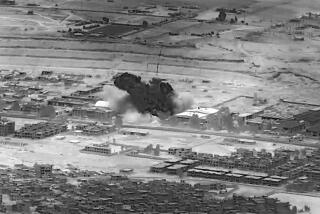U.S. Uses Honduras as Staging Area to Aid Contras, Salvador
WASHINGTON — Since 1981, Honduras has become an important staging area for U.S. military operations in support of the Nicaraguan Contras and the Salvadoran government, which is fighting a leftist insurgency.
A permanent U.S. military presence has grown in Honduras, including nine airfields, intelligence outposts, two radar stations, ammunition and fuel supply depots and medical facilities.
The U.S. installations, many operated in conjunction with the U.S.-supplied Honduran army and air force, support a near-constant series of military exercises for American active-duty and reserve forces. The exercises are also designed to provide a show of U.S. force in support of the Contras, to train Salvadoran government troops and to modernize the Honduran military.
The key active U.S. operations in Honduras are:
-- Joint Task Force Bravo, consisting of about 1,100 active-duty U.S. troops, is headquartered at Palmerola Air Base, a Honduran air force field near Comayagua, west of the capital, Tegucigalpa. A Pentagon spokesman called Palmerola a “temporary in-country headquarters,” although it has been in fact a permanent U.S. base for several years. It provides command and control, communications and logistical support for U.S., Honduran and Contra operations.
Bravo’s 40 helicopters were used in December, 1986, to ferry Honduran troops and equipment to the Nicaraguan border to repel a Sandinista attack on Contra camps in Honduras. They transported 700 Honduran troops to the front after Honduran President Jose Azcona Hoyo requested U.S. assistance.
-- A road-building exercise, involving about 850 National Guard, reserve and active-duty engineers, has been under way since December in the Yoro district in north-central Honduras. The exercise, known as Strong Roads, is scheduled for completion in June.
-- In the Gulf of Fonseca area, where Nicaragua, Honduras and El Salvador meet, about 1,100 U.S. military engineers, logistical and support personnel are carrying out the Big Pine training exercise in conjunction with Honduran troops.
-- A 150-member engineer battalion from Ft. Bragg, N.C., is in eastern Honduras upgrading a road and bridge in the Gracias a Dios region. The road joins Puerto Lempira and Mocoron in the Miskito Coast region, a staging area for Miskito Indian rebels against the Sandinistas and home of thousands of Indian refugees from Nicaragua.
A Pentagon spokesman said that no combat exercises are now under way in Honduras, although such exercises in the past have involved as many as 5,000 U.S. troops airlifted from the United States.
An airfield at Aguacate in eastern Honduras was improved in 1983-84 to support U.S. military exercises and later became the key support station for airdrops to the Contras. It does not support any current U.S. military operations, the Pentagon said.
Eight other smaller airfields in Honduras have been built or improved, ostensibly to support temporary U.S. and Honduran military exercises.
More to Read
Sign up for Essential California
The most important California stories and recommendations in your inbox every morning.
You may occasionally receive promotional content from the Los Angeles Times.










